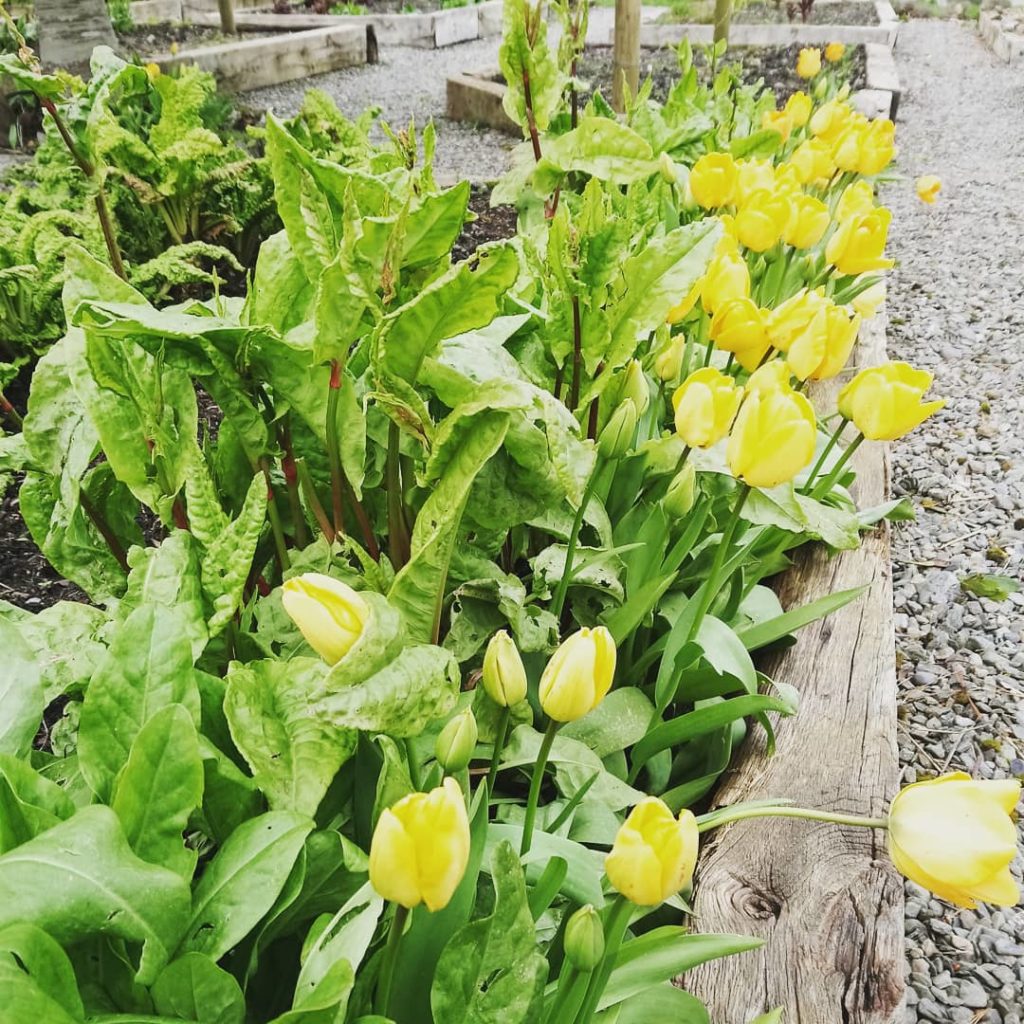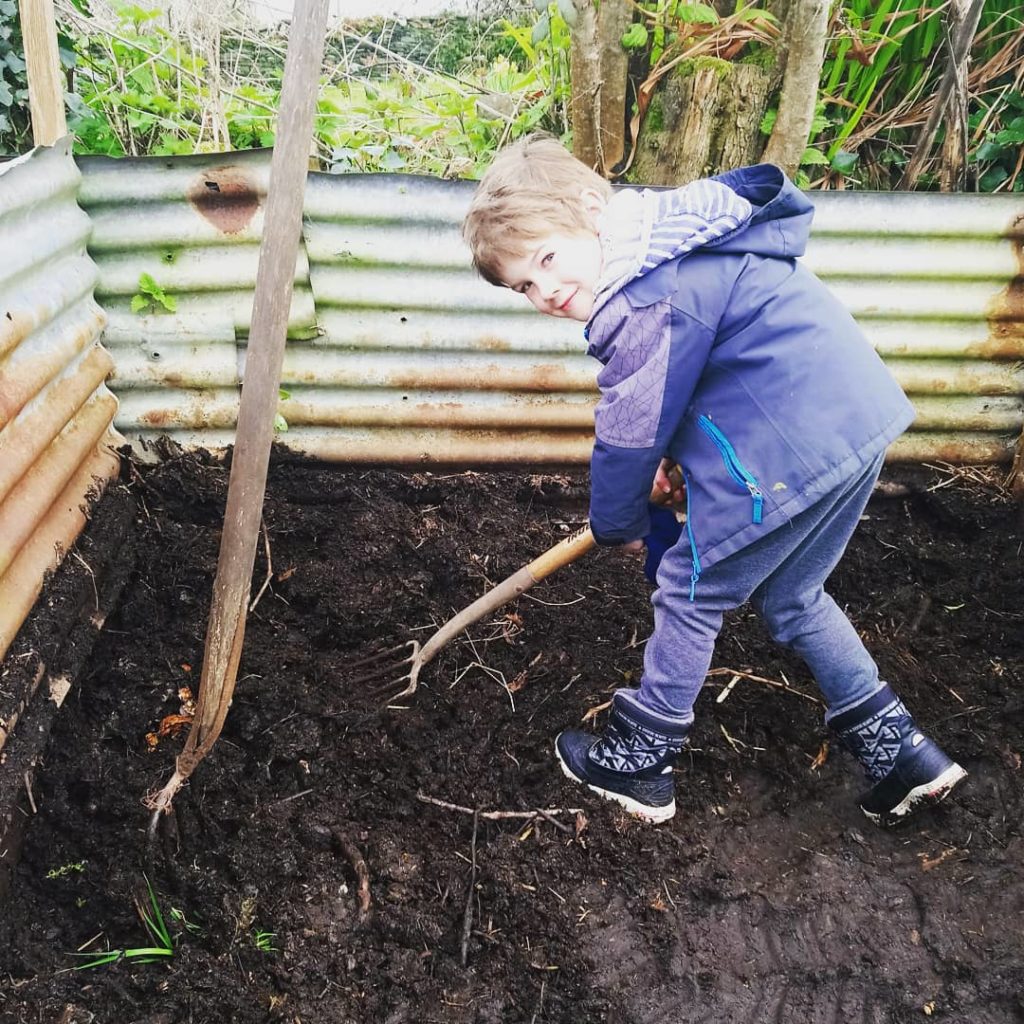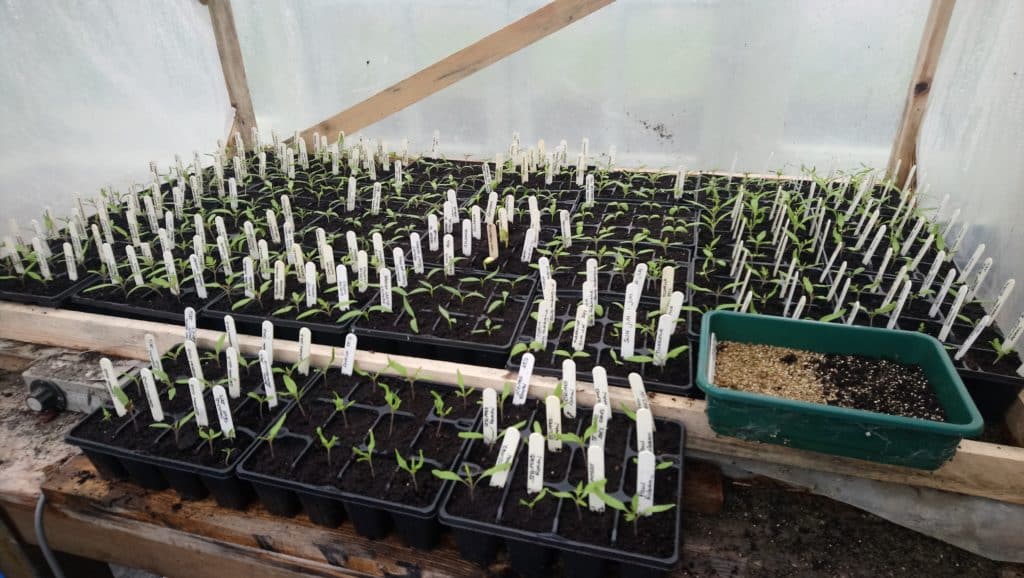I honestly don’t think I ever really thought I would see a situation like the one we find ourselves in now. I spend a lot of time worrying about the climate, inequality, food systems and sustainability in general, but this invisible enemy in the form of a virus has brought all these things into sharp focus. Peter and I are in the ‘vulnerable’ age group, and with our family, are all practising variations of social isolation, with all it’s consequential difficulties. You won’t be surprised that the one thing keeping me sane is my garden. Those of us with a garden are incredibly lucky and that thought goes through my head many times a day.
Ironically, I have never had so much time in my garden. Thankfully, the weather is improving at last, and glimpses of the sun have a very positive affect on my world view. Until now, these articles have been based on what I have been doing in the small veg plot just outside my kitchen. We designed it to see what we could grow in a small space. This experiment is still ongoing but now I have had to take over our large vegetable garden again. The Café is closed, and we have no idea in what form the business will continue when all this is over, but we all need to eat, so it is business as usual in the garden. It seems to make sense to widen the scope of the articles and include things we will be doing in the larger garden which seem to be relevant. In a way, although we grow large quantities of produce, our veg garden is more like a large cottage garden than a commercial market garden. We grow flowers and herbs in among and around the vegetables. We feel this makes the garden more resilient and creates a sort of micro-environment of its own.
We lost a tunnel in the awful weather we had earlier in the year, and it’s unlikely that we will recover the tunnel until much later in the year so we’re rethinking the more limited tunnel space we now have. I have been very busy propagating and have lots of plants coming on. It’s a case of shuffling plants around this time of the year, protecting more tender things such as tomatoes, peppers, aubergines etc., other, more hardy plants are out in the tunnel.
We planted our potatoes, around St. Patrick’s day; one tradition that we could keep. Our method is less traditional, we practise a no-dig system, just digging a hole with a trowel, dropping the potato in and covering it over with a layer of compost. We also put on a layer of either lawn mowings, or as in this case, some dirty straw we took out of the chicken run. We have also planted shallots, pushing them just under the soil hiding them so the birds don’t pull them out. The same would go for onion sets, but we grow onions from seed, so they are not quite ready yet. Our main job this week is spreading compost over the beds ready for planting in a couple of weeks, getting the tomato tunnel ready and composted, and keeping up with propagating. I saved all my tomato seeds from last year, twenty five varieties and the germination rate has been very good. I also have home-saved seeds of peas and beans. I am trying to use up seeds I have left from last year or even the year before. I haven’t bought many new seeds yet but it can be a risky strategy. Unless you are careful how you store seeds, the germination can be poor. I kept all the packets of home saved seeds in a kilner jar in a cool room with no central heating. Other seeds are kept in a small cupboard in sealed bags in the same cool room. Don’t store your seeds in your greenhouse or tunnel or a damp garden shed.
I will try to write more often to let you know what we are doing and any ideas that I think might help you get the best from your plot. If you have any questions that you think I might help with or ideas for subjects you are interested in please email me at glebegardens@gmail.com.





